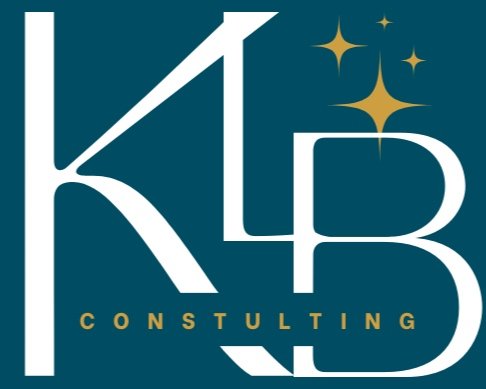Services
LEAD
How do we do it?
-
Together with leadership, we will plan our engagements, including answering the following questions:
What diagnostic, progress monitoring, and summative assessments will we use to structure our goals and data?
Are we aiming at growth or an absolute bar on assessments?
How often do we want to meet and measure progress toward our goals?
What will our engagements look like between leadership and KLB Consulting in-between our group meetings?
-
The whole group engaging in the Leading Towards Outcomes Framework will experience kicking-off our partnership. During this engagement, we will cover the following:
Who We are and What We Care About at KLB Consulting: 1) Above All Else, Relationships Matter 2) Play Hard & Work Hard 3) We Do The Work, Together
We discuss the team’s current Orientation to Data
Overview our Vision-Reality-Action Framework
Practice with the Work through a Content-Agnostic Case Study
Briefly Overview SMART Goals
Preview the Calendar Ahead & Necessary Assessment Next Steps
-
After the kick-off, teams then work to gather the data that will serve as the baseline data for our goal setting.
-
We will lead the team through a process of setting short-cycle change S.M.A.R.T. goals and identifying target students.
To do so, we go through a four step process:
1) Assess Performance on the Diagnostic Data - the data is disaggregated and broken down in a number of ways that makes it easy to digest and understand
2) Identify Target Students - based on their diagnostic data, the team will identify 4-7 students (who are all around the same level) per team-member that they will focus their intervention on
3) Select a Target Standard and/or Skill - for the teams that choose to focus more holistically on student growth, we can adjust an skip this step
4) Determine the Aggressive by Achievable Goal - by using past data, experience in their grade/content and knowledge of students, team members will collaborate to set a goal that is both a stretch and one they believe they truly can achieve
5) Check their S.M.A.R.T. goal to ensure it feels ambitiable (at the apex of ambitious and achievable)
-
Every 2 - 3 weeks, team members will administer progress monitoring assessments. This data will help us understand how we are progressing toward the S.M.A.R.T. goal we have set for our engagement.
This process happens again 2-3 weeks after the Data Analysis & Action Planning Meetings Below.
-
Following each progress monitoring assessment, teams will come together to analyze data and action plan. We do this through a multi-step agenda for these meetings:
1) Analyze the Data Holistically - the Progress Monitoring data will be disaggregated and broken down in easy to comprehend and analyze graphs and charts. During this section, the team will share what they notice and whether or not they are progressing toward their goal, and how they know.
2) Analyze the Data by Target Students - During this section, team members discuss how students are progressing toward their goal, where they are excelling, and where team members were hoping students would have scored higher
3) Root Cause or Assessment-Based Analysis - This is the heart of the meeting where team members identify questions or areas that they were hoping would be higher. Then, they go into the assessment and identify errors or misconceptions that students had with the data.
4) Prioritizing Knowledge & Skills - Team members must prioritize knowledge and skills to focus on with target students between the meeting and the next progress monitor
5) Identifying How to Tackle Knowledge & Skills - this is the second biggest part of the meeting. During this time team members innovate, ideate, and share ideas about how to best tackle the misconceptions, errors, or knowledge and skills they have prioritized.
6) Action Plan - team members finish the meeting naming action steps, timelines, and owners of actions leaving the meetings to ensure steps are taken toward getting closer and closer to the goal.
This meeting and process will repeat again 2 - 3 weeks after the next progress monitoring assessment.
-
Following our engagement, team members will give the summative assessment. This is the assessment they’ve been aiming towards throughout the entire engagement.
Following the gathering of the data, we love to have one final engagement where we celebrate the progress we’ve made to the goal, and reflect on things that we’ll take with us from the experience.
-
There are 3 types of reflections and adjustments that happen throughout the course of engaging together.
1) Ongoing, informal feedback: this can occur through email, text, phone calls, etc. These are small adjustments, moves that the Leadership team can make to get the team members to lead toward outcomes in a more purposeful way.
2) Formal 1-1 Check-Ins between the KLB Consulting Lead and the Leadership Team - these are most helpful when they occur in-between the Data Analysis & Action Planning Meetings to keep the school focused on the goals.
3) Beginning, Middle, and End Surveys: Given to team members and leadership after the kick-off, in the middle of the engagement, and at the end of the engagement, these are points where there KLB Consulting leaders reflect on efficacy, engagement, and culture, and progress of reaching our outcomes.
All that being said, feedback is a gift and we welcome it at any and all time throughout our engagement together.
Experience in service
Creating and Training teams on Vision, Reality, & Action: A Framework for Leading Toward Results
Creating personalized Managing Towards Outcomes Frameworks and aligned systems
Helping leaders identify the vision (including metrics and how the vision is measured), craft systems to monitor progress of the reality (including progress monitoring, observation or reflective guides) and take the most impactful aligned-action (including identifying root causes)
Supporting or crafting the systems and structures to monitor progress (including, but not limited to, Vision & Goals documents, Weekly Meeting Agendas, Meeting Cadence, and Reflective Guides)
Prioritizing Problems or Gaps between Vision and Reality that make the biggest impact
Choosing relevant data, which includes soliciting and incorporating feedback to identify opportunities for, and to improve effectiveness
Applying relevant analytical reasoning skills and ensuring quality of analysis
Recognizing patterns and relationships in data, synthesizing main points
Developing insights and strategic options for aligned and most impactful actions
Monitoring progress and addressing issues to ensure high quality results
Support leaders in identifying the most impactful actions they can take aligned to their vision and hopeful change
Support implementation of aligned actions through other contracting services


